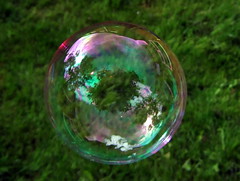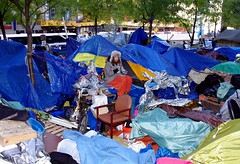When you ask teachers their views on Digital Citizenship and
how it should be integrated into learning in their classroom, one would
definitely get mixed reviews. Part of what I do as a Digital Fluency Consultant
is to help provide professional development regarding technology integration,
and assist teachers with integrating the Digital Citizenship Continuum into
learning. Prior to Thanksgiving, I had the opportunity to lead several Professional
development sessions at the Regina Catholic School Division Teacher Institute #RCSDInstitute on this topic from different curricular areas and grade
levels.
During a session with a group of High School teachers, many
ethical questions were brought up about considerations that have to be made for
the digital divide, as well perspectives represented in social media. We went
into great depth considering the social media bubble that can unknowingly encase
many of us, if we are not aware.
Within our discussion a point was made that
although social media can be great for connecting with others to explore
different perspectives, are we actually doing this? When we follow individuals
on Twitter, are we just following people with the same interests and
backgrounds as us? In doing so, are we reinforcing the same perspective or
viewpoint that we might already hold, thereby not providing the opportunity to
see other world views. It was brought up that when someone doesn’t have the
same perspective, and it makes us uncomfortable, how does the average person
react? Do we consider other opinions, or do we just unfollow these individuals?
This question has lead me to wonder, how my views are being shaped and
reinforced on Twitter. Although social media can be a great space to see a
variety of perspectives to widen our world view, it might be possible that we
are not exploring alternate viewpoints and instead are just seeking
affirmation.
After this discussion I started researching the effects of Twitter and the reinforcing bubble effect of social media. It has become clear that other students in our ECI 832 class have also been spending some time reflecting on the effect of Social Media and how we engage with the world. Fellow classmate, Laura Hunter, explores in her blog post, “Constant Connections” the impact of social media not only on herself, but on her daughters. She wondered whether social media is just a platform that is allowing us to become superficial as it “allows us all to hone in on meaningless snapchats, Facebook posts, and work emails” Turkle would agree and probably say that these superficial connections are diminishing our ability to really develop meaningful interactions face to face, “because we keep our phones in the landscape” or in our peripheral vision.
 |
| |
 |
| |
After this discussion I started researching the effects of Twitter and the reinforcing bubble effect of social media. It has become clear that other students in our ECI 832 class have also been spending some time reflecting on the effect of Social Media and how we engage with the world. Fellow classmate, Laura Hunter, explores in her blog post, “Constant Connections” the impact of social media not only on herself, but on her daughters. She wondered whether social media is just a platform that is allowing us to become superficial as it “allows us all to hone in on meaningless snapchats, Facebook posts, and work emails” Turkle would agree and probably say that these superficial connections are diminishing our ability to really develop meaningful interactions face to face, “because we keep our phones in the landscape” or in our peripheral vision.
 |
| Marc Spooner Twitter Post |
Other questions I have been considering since my High School
Digital Citizenship Session revolve around whose voices are heard in social
media. Marc Spooner, professor at the University of Regina, is one of these
individuals who creatively uses social media to tweet on behalf of those whose
voices are silent due to lack of access to technology. For more than a year,
Spooner has been quite active on Twitter sharing issues related to the housing crisis for low-income families. Being a social justice advocate, he is an
example of a person who speaks on behalf of those in need and evidently sees
the power of people made possible via Twitter. What if everyone started using Twitter to bring a voice to the silent? If more
people made an effort to retweet an alternative, less-heard perspective then
this could make a small difference in bringing about social change through
social media.
To further ways social media can be used for more than
sharing the trite or mundane, an article, by Mary Elizabeth Williams, “UsingSocial Media to Build a Better World: A Culture of Amplification” explores this point precisely. Williams shares an experiment where an
individual did a study and noted that men are more often retweeted than women.
So as a social experiment, this person made a point of only retweeting women to
tip the scale the other way. Did it make a difference? In a small way, perhaps
it did, at least in providing a sense of self-empowerment. Williams points out
that although the average person cannot make a direct impact Mass Media with
the content of magazines and television, they can make an impact at a social
media level. William further states, “…let’s
remember that when we’re only getting a certain kind of story and a certain
kind of perspective, we take it as the norm. Let’s understand that’s incredibly
limiting and painfully reinforcing.” For this reason, it is up to us to
be aware of who is not being represented, and remember that the dominate voice
is not the only voice.
So how does all this
connect to education? In teaching digital citizenship, we need to examine with
students the social bubble that can emerge when you restrict your lens to
circles of “Birds of a Feather”. Yes it can be affirming and fill one with
warmth knowing that someone else “gets you”, but how does it stretch or grow a
person’s understandings of other perspectives, if your world view is not
challenged but instead constantly reinforced? Why is it beneficial to be
exposed to viewpoints that make you squirm?
Is it possible that others will pick up on the power of social
media for social justice? Apparently in fact it has already happened. In a news
story from CTV, “Social Justice Found It’s Voice in Social Media in 2014”.
It was reported that “those tuned into the web's global conversations believe
2014 will be remembered as the time when social justice advocates found their
voice.” A point made within the article that resonated with me is as
follows:
"We're no longer looking at social media simply as
something that allows us to share pictures of what we had for breakfast or to
play games when we go online. We can also use it to do more meaningful things
like perhaps improve the world around us for those who might be disadvantaged."
 |
| |
 |
| |
In closing I share a TED Talk, "Youth Activism in the Era of Social Media: Emily's Entourage at TEDxLMSD". This TED Talk is a primary example of how social media can be used for social justice among teens. In the video, Julia and Coby Kramer-Golinkoff share how they used Social Media to share the story of their sister, Julia and her battle with Cystic Fibrosis to "rally people and mobilize change" and create awareness about the effects of CF through Social Media. It's a great TED Talk and demonstrates the power of social media and how millenials are exploring ways of sharing in authentic, meaningful ways.

No comments:
Post a Comment